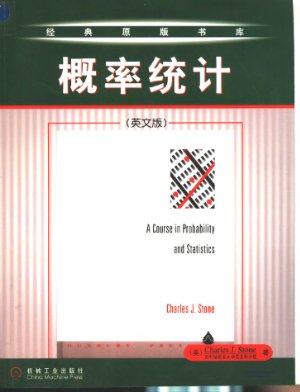Duxbury Press, 1995. - 838 pages.
This author's mode approach is intended primarily for honors undergraduates or undergraduates with a good math background taking a mathematical statistics or statistical inference course. The author takes a finite-dimensional functional modeling viewpoint (in contrast to the conventional parametric approach) to strengthen the connection between statistical theory and statistical methodology.
The writing of this textbook began a decade ago with my realization that, in this age of computers, the core of a first course in theoretical statistics should no longer consist of the classical material on mathematical statistics involving sufficiency, unbiasedness, efficiency, optimality, and decision theory.
At that time I decided to write a textbook for a one-year upper division or graduate level course on probability and statistics, in which the first half would serve as a textbook for a one-semester course in probability and the second half would serve as a textbook for a one-semester course in statistics having probability as a prerequisite. The probability portion would provide the proper background for the treatment of statistics, and the statistics portion in tu would apply and reinforce most of the probability material. The level of the book would be compatible with having two years of calculus, including a modicum of linear algebra (properties of vectors and matrices that are summarized in Appendix A), as its prerequisite.
This author's mode approach is intended primarily for honors undergraduates or undergraduates with a good math background taking a mathematical statistics or statistical inference course. The author takes a finite-dimensional functional modeling viewpoint (in contrast to the conventional parametric approach) to strengthen the connection between statistical theory and statistical methodology.
The writing of this textbook began a decade ago with my realization that, in this age of computers, the core of a first course in theoretical statistics should no longer consist of the classical material on mathematical statistics involving sufficiency, unbiasedness, efficiency, optimality, and decision theory.
At that time I decided to write a textbook for a one-year upper division or graduate level course on probability and statistics, in which the first half would serve as a textbook for a one-semester course in probability and the second half would serve as a textbook for a one-semester course in statistics having probability as a prerequisite. The probability portion would provide the proper background for the treatment of statistics, and the statistics portion in tu would apply and reinforce most of the probability material. The level of the book would be compatible with having two years of calculus, including a modicum of linear algebra (properties of vectors and matrices that are summarized in Appendix A), as its prerequisite.

